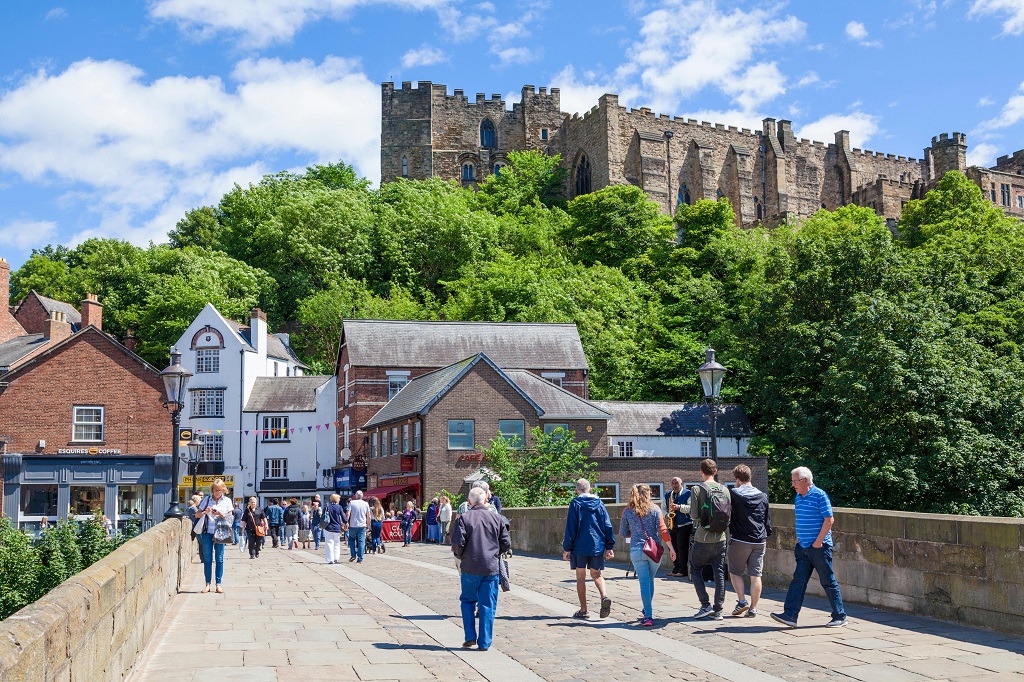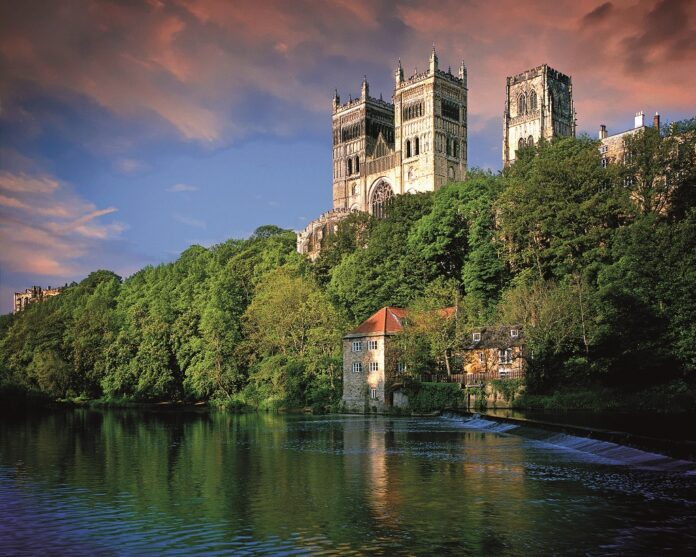The northeastern county of Durham is full of remarkable treasures that tell the tale of 1,000 years of English history
The American writer and Anglophile Bill Bryson first visited on a whim, getting off the train at Durham station with the intention of having a quick look at the cathedral before heading on to his destination, Newcastle. But Durham was not to release him so easily. “I fell in love with it instantly in a serious way”, he wrote. “If you have never been to Durham,
go at once. Take my car. It’s wonderful.”
Many visitors overlook this enchanting city, merely glimpsing it from the train while shuttling between the tourist hotspots of York and Edinburgh. But Durham and its surrounding county boast compelling reasons to visit, not least the magnificent building that Bryson called “the best cathedral on planet earth”.
Durham Cathedral sits in a loop of the River Wear, a location chosen for the natural protection afforded by the high riverbanks on three sides and the proximity of the mighty Durham Castle. It was built to house the shrine of St Cuthbert, the Northeast’s most venerated saint, who had been a monk and a hermit on the isle of Lindisfarne; fleeing Viking raids, his followers had wandered England for seven years, carrying his coffin, in search of a suitable resting place. In this lofty, tranquil place they had finally found it.
Built in 1093, the cathedral is Europe’s supreme example of the Norman-Romanesque style, with a high vaulted nave and enormous stone pillars carved with Moorish-style geometric designs.

When Cuthbert’s coffin was opened 11 years after his death, it was discovered that his body was perfectly preserved. This, along with numerous accounts of miracles at the shrine, saw the emergence of a widespread cult that made Durham a major medieval pilgrimage site.
You can see St Cuthbert’s shrine – a simple marble slab that replaced a jewel-studded affair destroyed in the Reformation – behind the High Altar. Treasures including his decorated oak coffin and a dazzling gold-and-garnet cross found within his robes are in the cathedral’s museum.
Shortly after Cuthbert’s death, William the Conqueror, fearful of the marauding tribes that roamed the Scottish border, granted the bishops of Durham the special title of Prince Bishop. It was a rank that afforded them almost regal power: they were able to form their own parliament, command their own armies, levy their own taxes and mint their own coins.
In return, the Prince Bishops would keep the unruly North under control. Their power base was Durham Castle, built in 1072, which stands across Palace Green from the cathedral. The Prince Bishops poured their considerable wealth into the castle, which became a palatial residence. Tours take in highlights including the 17th-century Black Staircase and Norman Chapel, and tell the story of the rise and fall of the Prince Bishops, an astonishing reign of almost 800 years: temporarily subdued by Henry VIII’s Reformation, they clung to their powers until 1836, when they finally ceded them to the Crown.

In 1832 the last of the Prince Bishops approved the founding of England’s third university (after Oxford and Cambridge) in Durham. Like its more famous sisters, it maintains a residential college system, and the castle is now home to the lucky students of University College.
Below the castle and cathedral, the centre of Durham is charming. Cobbled streets run between Georgian townhouses, and ancient stone bridges span the picturesque River Wear, along which students lark about in rowing boats or stroll the wooded riverbanks.






 © 2024
© 2024